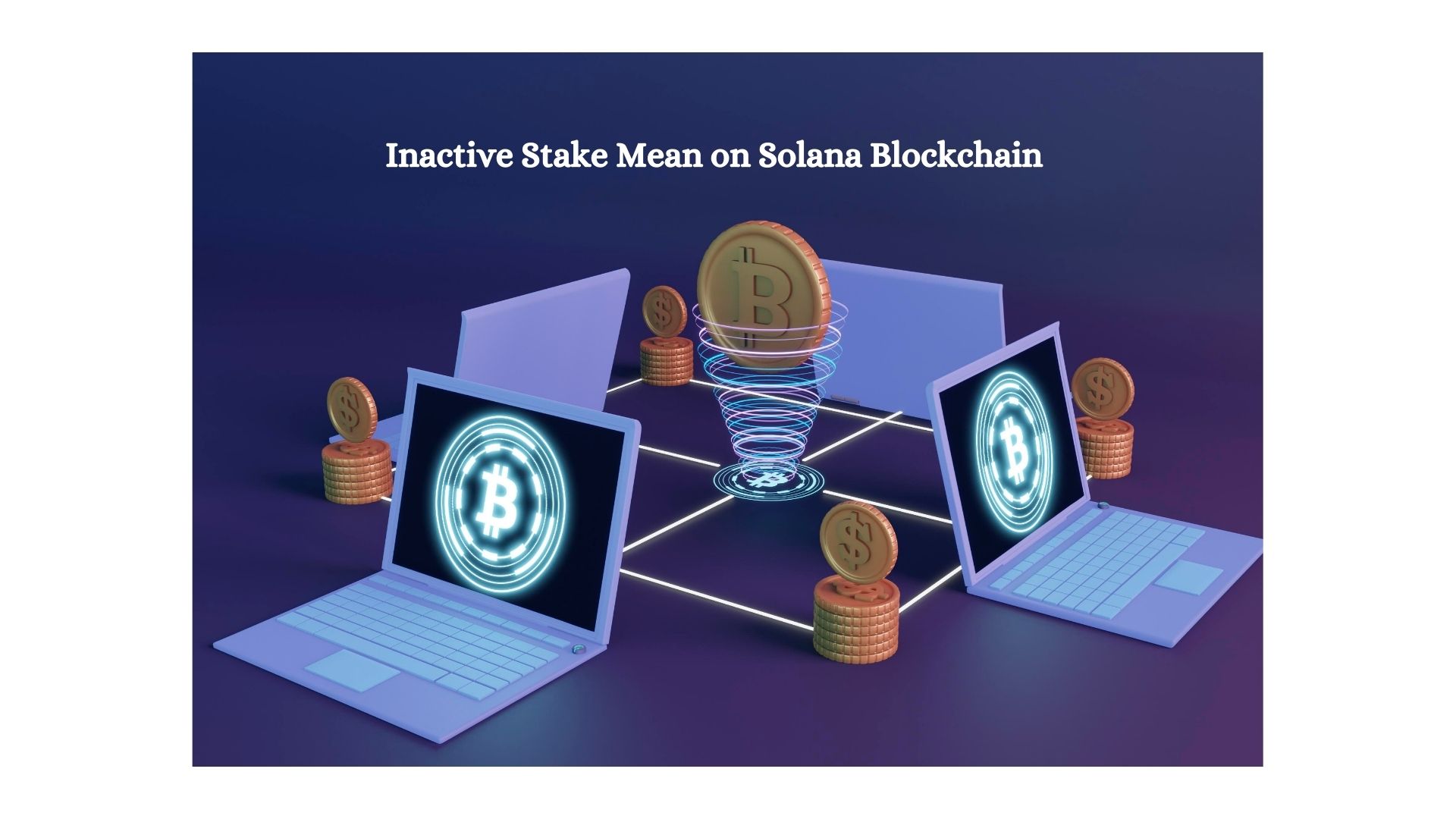Introduction
Sharing on Solana adds to the network and returns some shares. Still, many users have trouble with Inactive Stake Mean On Solana Blockchain. Why does this happen? This problem can make your trading benefits less valuable, and you may wonder how to fix it. This guide will explain what “inactive stake” on Solana means, why it might happen, and how to avoid it and get the most out of your stakes. We’ll discuss this crucial concept and avoid common mistakes.
What is Inactive Stake on Solana?
Definition of Inactive Stake in Solana Blockchain Network
When someone “cold stakes” on Solana, they place tokens with a verifier. These tokens can’t be used in the validation process right now, though. These tokens do nothing and don’t make any staking rewards while not being used. In this case, you should remember that any stake that isn’t being used is just sleeping and waiting to be used. This state only lasts briefly at different points in the staking process.
How Does Inactive Stake Affect Staking Rewards?
When someone “cold stakes” on Solana, that means they put tokens with a verifier. Tokens left in the verifier are in the Inactive Stake Mean on Solana Blockchain, so they cannot currently be utilized in the validation process. These tokens do nothing and cannot earn any stake rewards when unused. Recall that any unused stake is just sleeping and waiting to be used. Such a state is only temporary and sometimes takes place at the different stages of the staking process.
Difference Between Active and Inactive Stake on Solana
The working stake is the number of promised tokens used for agreement and staking to get the reward. In contrast, active stake means on Solana Blockchain refers to tokens that are not actively participating in the network and do not earn rewards. Different rules for staking on Solana are critical to achieving direct and full benefits
Causes of Inactive Stake in Solana Blockchain
Why Your Stake Becomes Inactive
Several things can cause a stake to stop working, as listed below. Timing is a major factor in stake transfer availability. After giving your Solana tokens to a validator, it may take an epoch to get them back. The validator or a slowdown in the network are two other things that could be wrong.
Common Missteps in Solana Staking That Lead to Inactivity
If you lose your stake because of one of the following mistakes, it will not be used: If you choose a slow or overloaded validator, it will take longer to register your stake. Third, if you do not know how sharing works or how the network settings work, your interest can stay quiet for as long as you want.
How to Activate Inactive Stake on Solana
Steps to Reactivate Your Inactive Stake
It’s straightforward to turn on a stake that has been turned off. Staking tokens with a validator requires only waiting for the next phase. Then your stake will be live. New validators are sometimes needed when the old one is not working. To keep your stake current, do the following:
- Choose a reviewer who has previously completed similar work and has done an excellent job.
- You should always check your stake to see how far it has come.
- If the stake stays unused, give it to a different validator. It is suggested that you keep the stick open.
Tips to Prevent Inactive Stakes in the Future
Before choosing a validator, research to avoid something that will only work in the present. Some important things to look for in a track record include a history of uptime, security, and low commission fees. The stake state is a metric that gets a lot of attention. If you keep having problems, don’t be afraid to switch validators.
Benefits of Avoiding Inactive Stake on Solana
Maximizing Staking Rewards by Keeping Your Stake Active
When your stake is active, you will reap the most benefits. Active staking, on the other hand, means that you take part in the network’s decision process and are paid for helping to protect the blockchain.
How to Ensure Continuous Staking Participation
To ensure continuous participation, regularly check your staking status and the performance of your chosen validator. Stay engaged with the community to keep up-to-date with changes or issues affecting your stake.
Advantages and Disadvantages of Solana Inactive Stake
| Advantages | Disadvantages |
| Provides a temporary safe zone while determining validator performance. | No staking rewards are made during inactive periods. |
| Allows for monitoring of market conditions and validator changes. | This can lead to financial losses if inactivity continues. |
| It will enable you to switch to a more loyal validator without losing money. | Reduces overall participation in network validation. |
| It helps prevent difficult decisions in staking, providing time for research. | Inactivity may confuse stake status and rewards. |
| It allows you to set your staking strategy without commitment. | Risk of missing out on network growth opportunities. |
| It may be beneficial for users who want to break their stake temporarily. | It defines the network’s voting power and influence. |
Inactive Stake vs Delayed Stake
It’s important to differentiate between delayed stakes and what some might call “inactive stakes.” Understanding how “inactive stake” is different from “delayed stake” is crucial for understanding what “inactive stake” means on the Solana blockchain.
- “Inactive stake” refers to a staked amount that no longer generates rewards because of issues with the validators or other technical problems.
- A delayed stake is either active or deactivated and is in a transitional state. When the process is done, it either becomes active or idle.
Both things can stop you from getting rewards: Inactive stakes must be fixed immediately, but delayed stakes are a normal part of the staking process.
FAQs:
1. Why do we have a stake in Solana that needs to be used?
Sometimes, a stake stops because sharing takes too long or a validator needs to do a better job.
2: How long does it take to set up a stake in Solana?
It takes about one hour or two days after releasement for a staking time to become active again.
3. When can an idle stake turn on by itself?
As it turns out, the so-called “inactive stakes” become active after every period as long as the validators don’t encounter any more problems.
4. Is there a prize for stakes that needs to be used?
No, stakes that are not being used do not add value to the network, so they do not earn rewards.
5. If the stake is inactive, can you change validators?
If you have any remaining stake, give it to another validator.
Conclusion:
Although annoying, fixing some of the most common Solana stake inactivity issues should be possible. Knowing which validator to use, monitoring its progress, and making changes as needed will help you maximize your stake. You now have the tools to keep your stake active and receive the deserved rewards.



